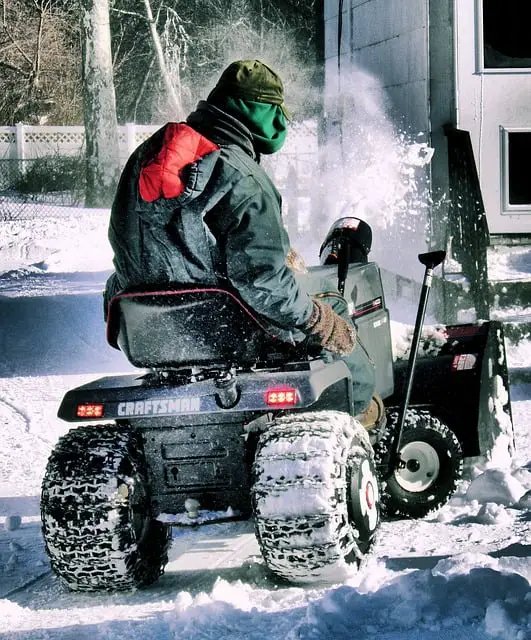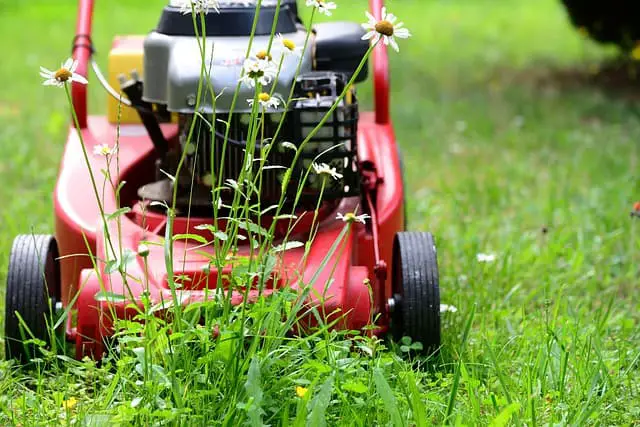There are a lot of things to learn about gas tillers. Many consumers have questions about how they work and which kind will best suit their needs. This FAQ guide will answer some common questions about gas tillers.
What is a gas tiller?
A gas tiller is a kind of garden cultivator, which means it is a machine that digs into the soil.
Gas tillers use metal blades called tines to dig into the ground. A tiller turns over soil, incorporates new soil, reduces weeds, and more.
Gas tillers are tillers that are powered by gas and tend to be more powerful than electric tillers, although they are also heavier and require more maintenance.
According to Mowers Direct, soil needs to be broken up in order to produce the best crops. This is why people use gas tillers.
What is a front-tine tiller?
A front-tine tiller is great for general garden maintenance like preparing soil and compost as well as weeding in medium or small gardens.
Small tillers like this have tines that move the machine forward while simultaneously digging the soil.
It is wise to get a front-tine tiller if you won’t be doing more than working on small plots. You don’t want a machine that is unnecessarily large, powerful, or difficult to maneuver.
What is a rear-tine tiller?
A rear-tine tiller has engine-driven wheels. They are best for planting areas that are on the larger side.
They can have tines that rotate forward which are good for working in compost, cultivating, weeding, and turning over old vegetation.
They can also have tines that rotate backwards in the opposite direction of the wheels. These are better at breaking up ground and can dig deeper into the soil.
Rear-tine tillers will take up a lot of storage space and are heavier than front-tine tillers. They are also harder to maneuver.
What are reversible tines?
Reversible tines can be rotated forwards or backwards.
You can put them forward when you are breaking up soft soil or cultivating. You can put them in reverse when you are breaking up rocky soils.
If your tiller has reversible tines, that makes it more versatile and you will get the best of both worlds.
Which is better, a gas tiller or an electric tiller?
Electric tillers are good for confined, small spaces.
They have compact electric motors instead of gas engines. This means you don’t have to mix fuel and oil or refuel them, they operate more quietly, and they take up less storage space.
They are the best choice for small to medium plots.
Gas tillers are heavier and more powerful than electric tillers. They are good to blend dense soil, cultivate medium garden plots, and work far away from electrical outlets.
What are some attachments to look for?
Some tillers are adaptable to add attachments onto. This makes them multi-purpose.
With attachments, tillers can furrow, dethatch, edge, and even blow snow.
If you are interested in attachments, make sure you buy a tiller that is attachment-friendly.
Where can you buy gas for a gas tiller?
You can buy gas at home improvement stores like Home Depot or Lowes.
What is the history of tillers?
Scratching the soil to control weeds is an ancient process that used to be done with mattocks and hoes.
The next set of cultivators were drawn by animals or people.
Today, commercial cultivation for weed control is reduced and replaced by the use of herbicides, with organic farming being the exception.
Tillers are now used in gardens to perform basic tasks and are available online or at many different stores.
The Institute of Agriculture and Natural Resources explains that tilling injects nutrients into the soil and is perfect for soils that drain poorly. No wonder tilling is something farmers and gardeners have done for millenia!
What is the difference between a cultivator and a tiller?
Cultivators are great at loosening soil in a planting area that already exists. They also weed the area and can mix compost into the soil.
Cultivators are smaller than tillers and easier to use.
Cultivators can be gasoline-powered, cordless, or corded.
Tillers are gasoline-powered machines that have a wider width than cultivators do. They are better for heavier jobs.
Tillers are more powerful and have heavy-duty tines to dig into the soil.
How do you choose a tiller?
Mini tillers will work if you are just tilling a small herb garden with soft soil. If your soil is compact you will need more than a mini tiller, even if it is just a small area.
A front-tine tiller is the next step up. A four horsepower tiller is easy to maneuver in tight spaces.
If you’re tilling a large garden or an entire yard, get a rear-tine tiller. If your ground is very rocky or hard, get a model that has counter-rotating tines.
It will take more than one pass with a front-tine tiller to do the work that a rear-tine tiller can do in one pass.
Mini tillers cost between $250 and $350. Front-tine tillers cost between $500 and $750. Rear-tine tillers cost between $800 and $2,000.
How do you start a tiller?
There are a few steps to starting up a tiller.
- Set the depth adjuster. For the first pass, the depth adjuster should always be all the way up.
- Put on your personal safety equipment. Wear safety glasses, long sleeves and pants, and boots.
- Turn on the tiller. The switch will be by the engine.
- Open the throttle. This lets fuel get into the engine.
- Turn on the choke. This controls how much air gets into the engine.
- Pull the cord to start the engine. Once the engine turns on, disengage the choke.
How do you till soil?
Once the tiller is on, it’s time to till the soil.
- Pull the levers up that are under the handles. The tines won’t turn until you squeeze the levers.
- Tip the tiller slightly forward. This tips the tines into the soil.
- Walk at a normal pace.
- Keep the tiller tipped at the same angle so the depth remains consistent.
- Alternate rows as you make passes. If you till every other row, it will be easier to maneuver your tiller.
- Go over your work again horizontally instead of vertically. Your tines should be further into the soil on your second pass.
- Turn off the tiller.


